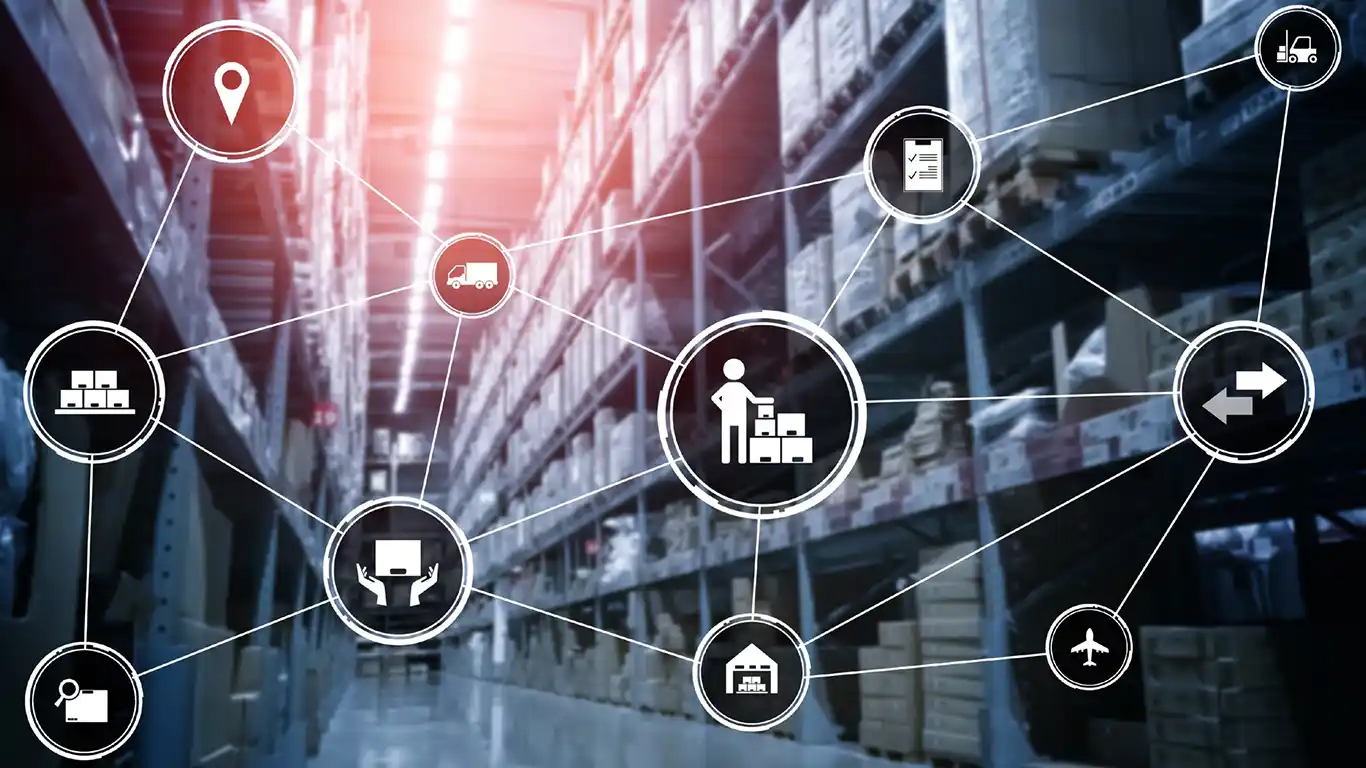Accelerating Fulfilment - A Whitepaper
Optimizing Supply Chain for Modern E-Commerce

In the fast-paced world of modern e-commerce, fulfillment speed and efficiency are critical differentiators. Consumers expect rapid delivery, real-time order tracking, and seamless returns, creating immense pressure on e-commerce businesses to optimize their supply chains. Inefficiencies such as inventory mismanagement, fragmented logistics networks, and outdated fulfillment strategies lead to delays, increased costs, and customer dissatisfaction.
This whitepaper explores how businesses can accelerate fulfillment by leveraging advanced supply chain strategies, AI-driven logistics, automation, and real-time visibility solutions. We analyze the common challenges that hinder fulfillment efficiency, propose innovative solutions that enhance speed and scalability, and discuss the long-term benefits of a streamlined fulfillment ecosystem. By implementing cutting-edge supply chain optimization techniques, businesses can improve operational efficiency, enhance customer experience, and maintain a competitive edge in the ever-evolving e-commerce landscape.
E-commerce has witnessed exponential growth, driven by changing consumer expectations, digital transformation, and the increasing demand for faster, more convenient shopping experiences. Fulfillment—the process of storing, picking, packing, and delivering goods—plays a crucial role in ensuring a seamless e-commerce operation.
However, traditional fulfillment models are struggling to keep pace with the growing demand. Customers expect same-day or next-day deliveries, and businesses must navigate complex logistics networks, fluctuating demand, and global supply chain disruptions to meet these expectations. Optimizing fulfillment requires a combination of data-driven decision-making, warehouse automation, last-mile delivery innovations, and strategic inventory management.
This whitepaper examines the fundamental challenges in modern fulfillment, explores next-generation solutions, and highlights best practices for businesses looking to scale their e-commerce operations effectively.
Despite the advancements in digital commerce, several challenges continue to hinder fulfillment efficiency:
Inventory Inaccuracy and Poor Demand Forecasting: Inefficient inventory tracking leads to stockouts, overstocking, and missed sales opportunities. Poor demand forecasting results in unbalanced inventory distribution across warehouses and fulfillment centers.
Slow and Inefficient Warehouse Operations: Many businesses still rely on manual picking, packing, and sorting processes, leading to slow order processing times and increased labor costs.
Fragmented Logistics and Last-Mile Challenges: Coordinating multiple carriers, optimizing delivery routes, and ensuring timely last-mile delivery remain significant challenges, particularly in urban and remote areas.
Lack of Real-Time Visibility and Tracking: Customers demand real-time tracking, yet many businesses lack the infrastructure to provide accurate, up-to-the-minute order status updates.
High Return Rates and Reverse Logistics Complexities: E-commerce returns can be costly and inefficient, with many businesses lacking an optimized returns processing strategy.
Scalability Issues in Peak Demand Periods: Many e-commerce businesses struggle to scale their fulfillment operations effectively during high-demand periods such as holidays and sales events, leading to fulfillment bottlenecks.
Cost Inefficiencies in Fulfillment Operations: High fulfillment costs due to inefficient processes, excessive labor reliance, and expensive last-mile delivery services reduce profitability.
Proposed Solution
To address these challenges, businesses must adopt an integrated fulfillment strategy that leverages technology, automation, and advanced analytics. Key solutions include:
AI-Driven Demand Forecasting and Inventory Optimization
Leverage machine learning algorithms to predict demand fluctuations and optimize stock levels.
Implement real-time inventory tracking using IoT-enabled sensors and RFID technology.
Use dynamic stock allocation models to distribute inventory efficiently across fulfillment centers.
Automated Warehousing and Robotics
Deploy robotic picking and packing systems to improve fulfillment speed and reduce labor dependency.
Implement conveyor systems and automated sorting to enhance warehouse efficiency.
Utilize smart shelving and AI-based bin location systems to optimize storage and retrieval.
Smart Logistics and Last-Mile Optimization
Utilize route optimization algorithms to reduce delivery times and costs.
Partner with third-party logistics (3PL) providers for flexible and scalable delivery solutions.
Implement micro-fulfillment centers in key urban locations to facilitate same-day delivery.
Real-Time Tracking and Visibility Solutions
Enable real-time order tracking through GPS-enabled logistics networks.
Provide customers with live delivery status updates and proactive notifications.
Use AI-powered anomaly detection to anticipate and mitigate potential delays.
Seamless Returns Management and Reverse Logistics
Implement AI-driven returns processing to expedite refunds and exchanges.
Offer customer-friendly return options such as drop-off locations and home pickups.
Optimize reverse logistics by redistributing returned goods based on demand patterns.
Scalable and Agile Fulfillment Models
Utilize on-demand warehousing to expand fulfillment capacity during peak demand.
Implement hybrid fulfillment models, including direct-to-consumer (DTC) and in-store fulfillment.
Adopt AI-powered fulfillment orchestration to dynamically allocate resources.
Cost Optimization Strategies
Leverage predictive analytics to reduce operational inefficiencies and minimize unnecessary expenses.
Implement smart packaging to reduce shipping costs and improve sustainability.
Automate invoicing, payments, and contract negotiations with logistics partners using AI.
Implementing an optimized fulfillment strategy yields significant advantages for e-commerce businesses:
Faster Delivery and Improved Customer Experience: Streamlined fulfillment processes ensure faster order processing and reduced delivery times, leading to enhanced customer satisfaction.
Enhanced Scalability and Peak-Season Readiness: Businesses can scale their fulfillment operations effectively to meet fluctuating demand without compromising efficiency.
Increased Operational Efficiency: Automation and AI-driven optimization reduce manual effort, lower error rates, and improve overall productivity.
Reduced Fulfillment Costs: Efficient warehouse management, logistics optimization, and smart inventory distribution lower costs associated with fulfillment operations.
Greater Supply Chain Visibility: Real-time tracking and predictive analytics provide businesses with end-to-end visibility into their supply chain, enabling better decision-making.
Competitive Differentiation: Faster and more reliable fulfillment services enhance brand reputation and customer loyalty, providing a strong competitive advantage.
Sustainability and Reduced Waste: Smart inventory management and optimized logistics help reduce excess stock, minimize returns, and lower the environmental impact of e-commerce operations.
The future of e-commerce fulfillment lies in embracing digital transformation and integrating advanced technologies into supply chain operations. Businesses must prioritize efficiency, agility, and scalability to meet evolving consumer expectations.
By leveraging AI, automation, and real-time visibility, e-commerce companies can accelerate fulfillment processes, reduce costs, and improve customer experiences. Implementing a robust fulfillment strategy is not only essential for operational excellence but also for maintaining a competitive edge in the rapidly evolving digital commerce landscape.
Organizations that invest in modern fulfillment technologies today will be best positioned to succeed in the future, ensuring a seamless, cost-effective, and customer-centric supply chain.
